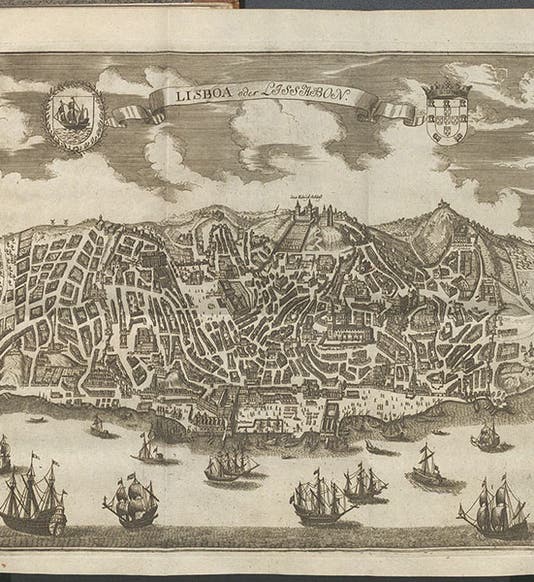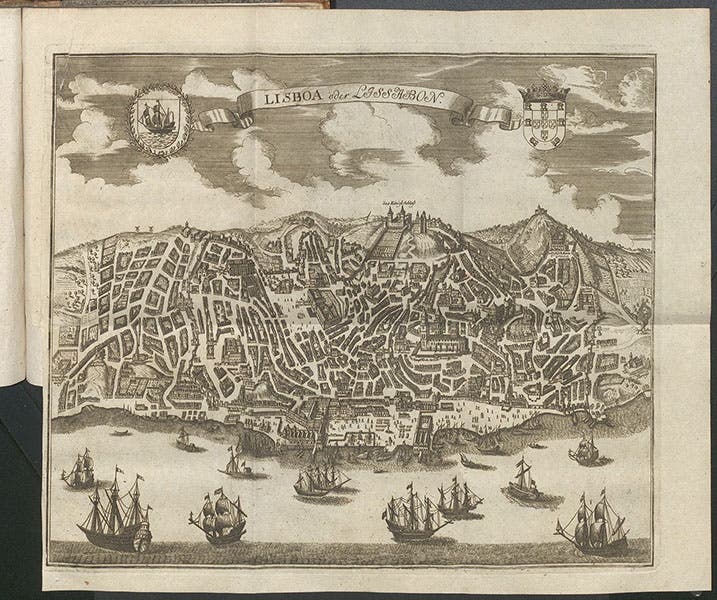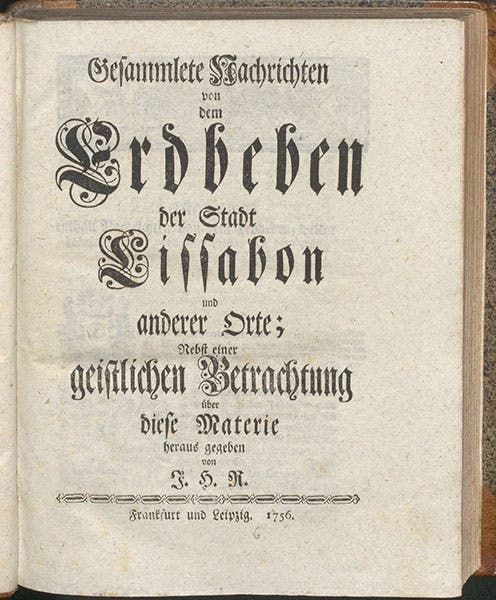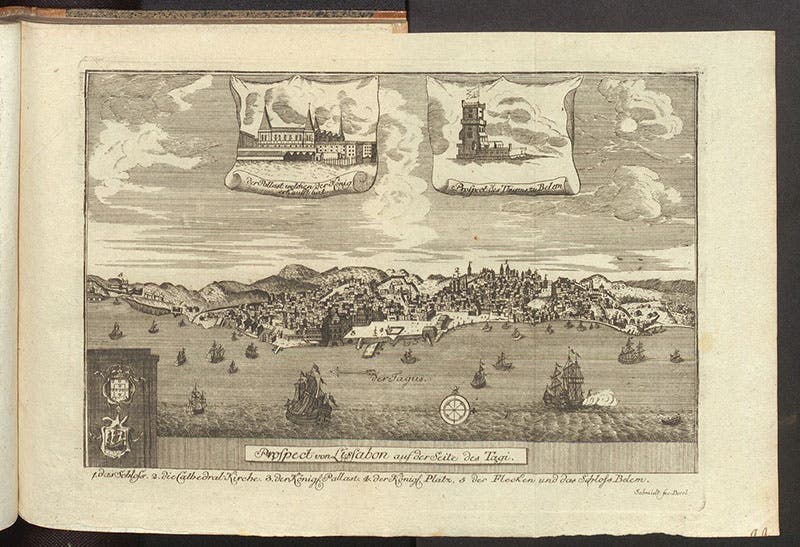Scientist of the Day - Lisbon Earthquake of 1755
The great Lisbon Earthquake struck Portugal, north Africa, and the eastern Atlantic seabed on Nov. 1, 1755, with Lisbon experiencing the most extensive destruction and loss of life. Estimated to have been a magnitude 8 earthquake or worse, it hit the city on All-Saints Day on a Saturday morning when churches and squares were filled with people. Tens of thousands of people died, and then the city was consumed by fire. It was one of the most devastating natural disasters of early modern times.
We wrote about the Lisbon earthquake 7 years ago, when we featured Andreas Maschenbauer, who was otherwise an insignificant historical figure, but who did write a pamphlet on the quake, which he rushed into print, so his was the first published treatise on the earthquake. Since it was written in Augsburg, he did not have much in the way of first-hand information. Maschenbauer included engravings of Lisbon, and a few maps, in his book, but he had no image of the earthquake itself, so we showed an engraving borrowed from Wikipedia from an unknown source, which I assumed was a broadside of some sort. We had just acquired Maschenbauer's book, which provided the occasion for our post, even though we didn't (and still don't) know much about the author/publisher. Here is our post of 2017 on Maschenbauer.
This second post on the Lisbon Earthquake is prompted by another recent acquisition, a much more interesting and complex one. Earlier this year, we acquired a sammelband, a term we have used a few times in this series. A sammelband is a collection of tracts, bound into the same volume, usually on a similar subject (although not necessarily), and which find themselves bound together only because an owner chose to do so. The particular sammelband that prompts this post contains six tracts on the Lisbon earthquake of 1755. The first and longest tract has a named author, J.H. Rühlen, about whom nothing is known; the other tracts are anonymous. They were printed in various cities – Frankfurt, Leipzig, Stockholm, and Gdansk – all northern cities, far from Lisbon. The six tracts are illustrated with 5 engravings, all of which we show here.
There are three engravings that offer views of the city before the earthquake, all different. The one we show first accompanies tract 4 of the sammelband. As you can see if you count the folds, it is a large plate, and has an unusual viewpoint, looking at the city from the ocean, and from above, at the same time. The second city-view (third image) is in Tract 3, and the third one (fourth image) is part of Tract 6.
Tract 5 has a completely different kind of plate, showing the Earth in cross-section (fifth image). It was blatantly fashioned from two large engravings in the Mundus subterraneus of Athanasius Kicher (1665), one of which shows the subterranean water network that gives us rivers and springs (the top half of the 1756 engraving) , and the other streams of molten rock within the Earth that come to the surface as volcanoes (the bottom half of the engraving). The location of Lisbon (Lissabon) has been added in at top left. You can see one of the two original engravings that spawned this one at our first post on Kircher.
But the greatest feature of our new sammelband is an engraving that depicts the immediate aftermath of the 1755 earthquake. Granted, it is imagined and fanciful, but it is dramatic, and shows a city in dire straits, with the buildings shattered and in ruins, the hills aflame, and the ships in the harbor wracked by tsunamis. The poor reproduction on Wikipedia that we showed in 2017 was a copy of this very plate. So now we have the original.
Our sammelband was acquired by rare book librarian Jason Dean from London rare book dealer Leo Cadogan. It was an especially nice addition because none of the 6 tracts – not one – can be found anywhere else in the United States, according to WorldCat, the international online access catalog, and there are only a few copies of each tract in European libraries. We always like to have books that no one else has, because that makes us, well, unique. With this sammelband, we are unique six times over.
If you are more interested in sammelbands than earthquakes, we have written a post on a sammelband of electrical works in our collections (see the post on William Watson), and another that collected diatribes of Thomas Hobbes and John Wallis against each other (see our post on Wallis).
William B. Ashworth, Jr., Consultant for the History of Science, Linda Hall Library and Associate Professor emeritus, Department of History, University of Missouri-Kansas City. Comments or corrections are welcome; please direct to ashworthw@umkc.edu.












